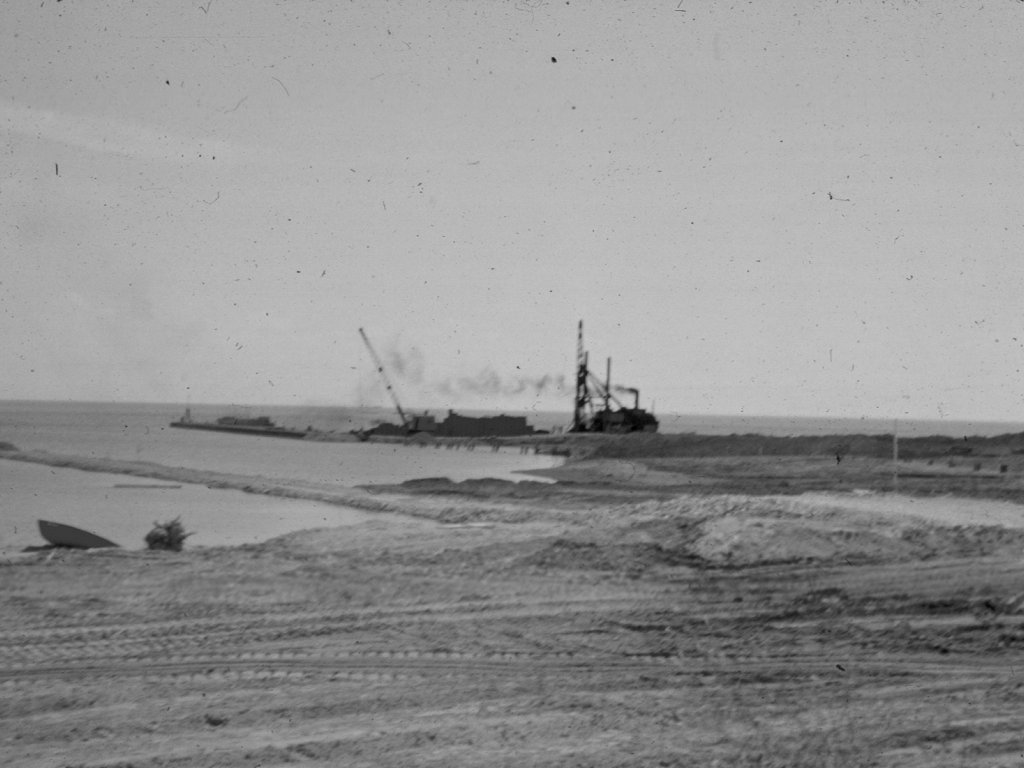Keeping with the nautical theme from last week, but with some more direct Mississauga connections, there was a time when large lake freighters called Mississauga (well, Port Credit) their home port. We do not often think of Mississauga as being a “Port City”, as our waterfront has become largely recreational, but there was a time in our not-so-distant past when large ships of industry and commerce tied up at the piers and docks around the mouth of the Credit River.
By 1950 the port of Port Credit had been in decline for many years. However the Federal government was planning to set a new course with the development of the St. Lawrence Seaway project. Anticipating a hopeful resurgence of the harbor, the Department of Public Works had built a 120-metre pier in 1952, and Navigation lights were installed. The pier would be the first step for future plans to expand Port Credit’s harbour. In 1955, over 3 hectares of land was reclaimed from Lake Ontario to provided land for a new warehouse and dry-dock. Over the next few years other improvements and expansions were made, including a new 588-metre dock and a 700-metre break wall in 1958.

In 1962, the existing dock was extended, and dredging was undertaken to deepen the harbour to make it equivalent to the draft through the Welland Canal. Also in 1962 additional navigation lights were installed. Over time, the navigational markers changed location (one is now on the bow of the Ridgetown, which was sunk as a break water in 1974). The four active navigational markers in Port Credit are still observed by recreational boaters at Credit Village Marina, and as one historian wrote, “these hard-working guardians go almost unnoticed today, they are the true descendants of the 1884 lighthouse.”
The new dock facilities at Port Credit were ready by mid-1959, coinciding with the official opening of the St. Lawrence Seaway, but the warehouse and shipping facilities had been delayed until a user could be found. The harbour plan at Port Credit appeared to be based on hope that some company would come. But nobody came at first. A harbour improvement plan was initiated in 1961, which included plans to build a 150,000 square-foot warehouse and combined office building, with additional 17,000 square-foot open dock facility, which was completed in 1963. Then, finally, after more than a decade, Canada Steamship Lines came to Port Credit. The officially opening of the CSL terminal took place on March 18, 1963. But it would not last. As the ships grew bigger, Port Credit simply could not keep pace. After only nine years, CSL left Port Credit in 1972, and in 1973 the harbour received a major overhaul for use as a recreational marina facility.

Some of the large lake freighters from Canada Steamship Lines that called Port Credit their home port for a time included the Cedarglen, Frontenac, Niagara, Spruceglen, Tadoussac and Glenelg, amongst others. Westdale Shipping of Hamilton, with its own fleet of freighters, also made use of the port.
NOTE: This story was previously published as part of the Way Back Wednesday series in Modern Mississauga by Heritage Mississauga.
It can be found on their website here: https://www.modernmississauga.com/main/2020/9/16/remembering-the-port-in-mississaugas-port-credit



Comments are closed.